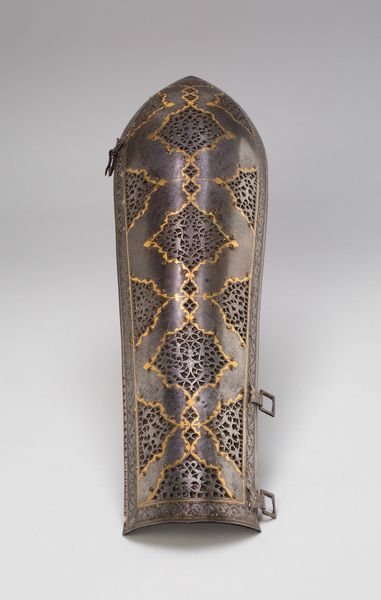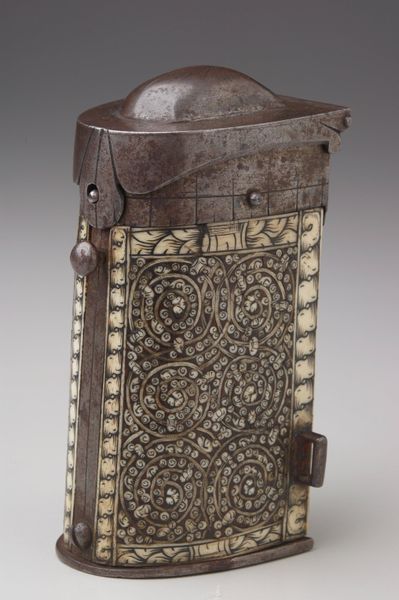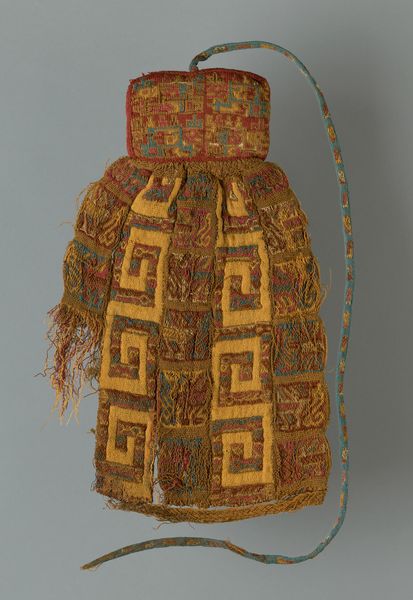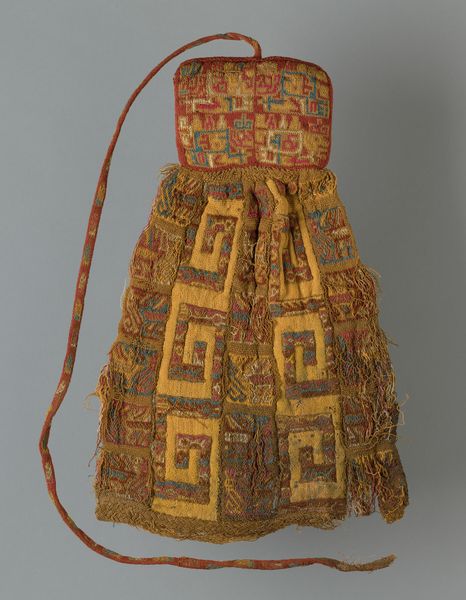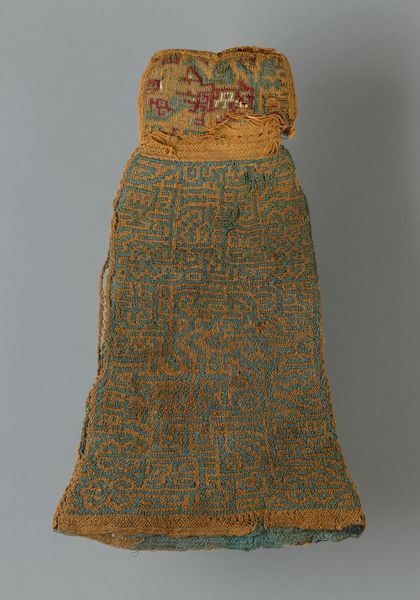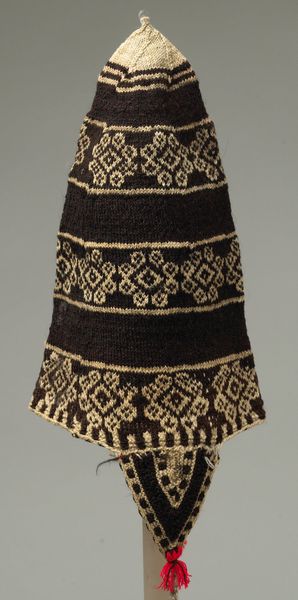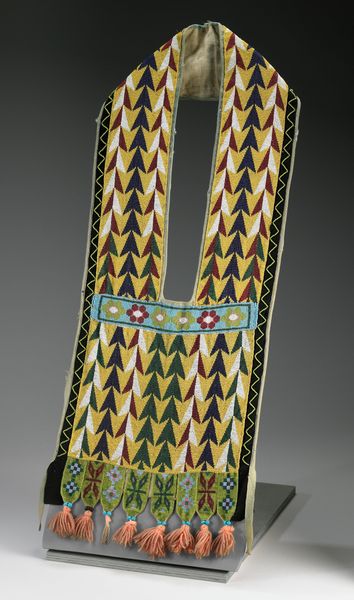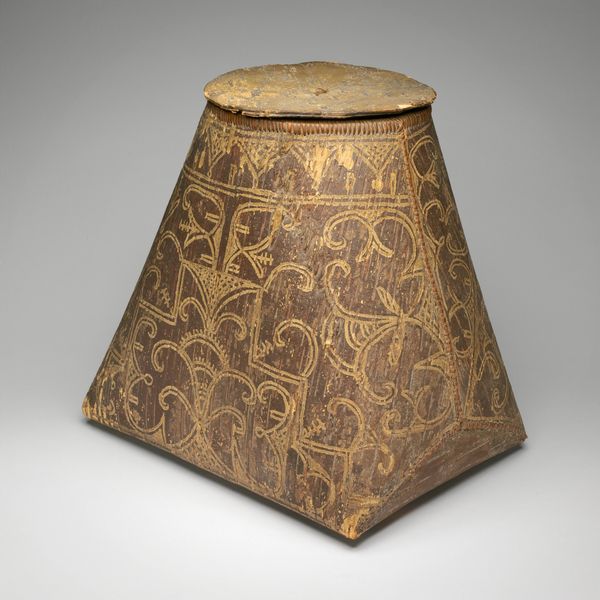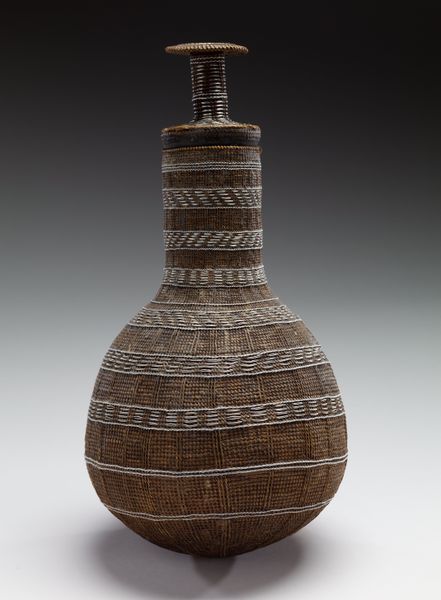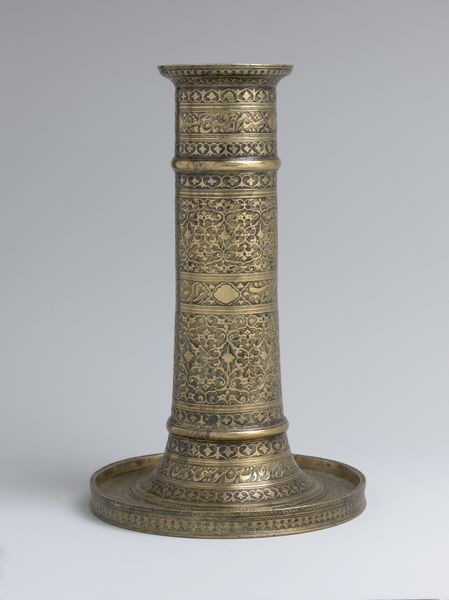
brass, sculpture
#
brass
#
sculpture
#
islamic-art
#
decorative-art
Dimensions: 37 1/2 x 11 5/16 x 11 11/16 in. (95.25 x 28.73 x 29.69 cm) (closed, overall)
Copyright: Public Domain
Curator: This ornate object before us is a Torah scroll case, a "Tik," crafted around the early 20th century. Editor: My first impression is the intricacy of its design, which is very striking. The brasswork catches the eye immediately, suggesting considerable craftsmanship. Curator: Precisely. Let's delve into that brasswork. Consider the process involved in creating this dense, textured surface. The maker's labor—the chasing, the engraving, the assembly of individual components—speaks to a complex division of labor. We can almost see the hands that shaped it. Editor: Yes, but consider, too, the impact of that surface design. The repeating geometric patterns, overlaid on that domed shape, offer an appealing composition. The red stones interspersed give the whole artwork some welcome textural contrast. It also seems to draw the eye upwards. Curator: What's also important to remember is this isn't just surface decoration; this object served a vital communal purpose. Think of the availability and the sourcing of brass during that period and what this meant to the patrons. Editor: And the artist uses this expensive brass material and turns it into a work of art. Looking closer, the symmetry is notable. Each element seems carefully balanced against the other, lending a sense of formal order and, dare I say, harmony. Curator: Absolutely, but it's important to acknowledge this was not necessarily created within a Western framework of "high art." Often, such religious objects are treated more as craft within the communities that created them. Editor: Regardless of categorization, I think its aesthetic and formal impact remains profound. The object has balance, pleasing details, and thoughtful design. The overall effect on the eye is simply beautiful. Curator: By looking closely at its manufacture and consumption, as well as its societal and historical context, we come to fully appreciate the artistry on display. Editor: Indeed. Examining elements such as form, symmetry and texture allows us to see it as something beyond utility, to appreciate the formal artistic vision and impact that guides it.
Comments
minneapolisinstituteofart almost 2 years ago
⋮
This hard sided tik, or Torah scroll container, is representative of the type used in the Sephardic tradition. Fashioned of wood or metal, the hard construction made it easy to transport and provided more protection for the Torah than the Ashkenazi cloth mantle (see an example from the permanent collection on the other side of this gallery). This particular tik was made in Baghdad in the early twentieth century, a city famous for its metalwork.
Join the conversation
Join millions of artists and users on Artera today and experience the ultimate creative platform.
